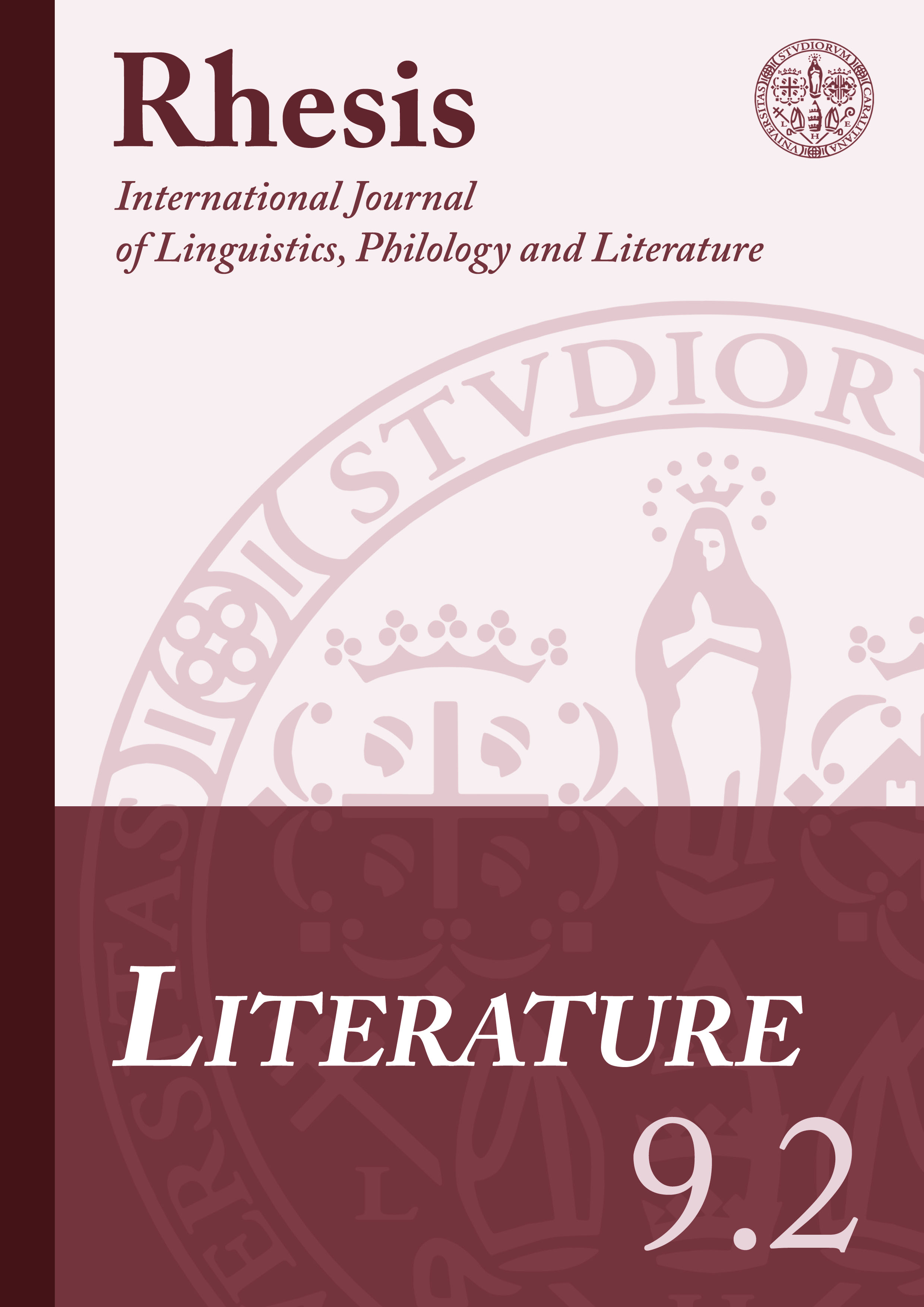Le due virtù della spada: Justitia e Fortitudo
Abstract
Following the path of Prudentius’ Psychomachia, in the Middle Ages the sword can characterize the representation of many Virtues, as generically proper to the Christian fighting the battle for his personal salvation. In contemporary culture this weapon is a specific attribute of Justitia, but, between the 9th and the15th centuries, it was primarily characteristic of another virtue, Fortitudo. The paper follows the evolution of both these representative traditions. First of all, it focuses on the very remote origins of the image of Justitia with sword, and on what led to the rebirth of this iconic formula after the year 1000. Secondly, and above all, it reconstructs the forgotten history and the complex development of Fortitudo’s representation as a warrior armed with shield and sword, unsheathed and upright.
Downloads
References
Annales Bertiniani, a cura di Georg WAITZ, MGH Script. rer. germ. 5, Hannover, Hahn, 1883.
Jacques de Baisieux, L’Œuvre de Jacques de Baisieux, a cura di Patrick A. THOMAS, La Haye-Paris, Mouton, 1973.
Robert de Blois, Sämtliche Werke, vol. III, a cura di Jacob ULRICH, Berlin, Mayer und Müller, 1906.
Corpus antiphonalium officii, Rerum ecclesiasticarum documenta, a cura di René-J. HESBERT, 6 voll., Roma, Herder, 1963-1979.
Corpus iuris civilis, vol. I, a cura di Theodor MOMMSEN, Paul KRÜGER, Berlin, Weidmann, 1938.
Den Norsk-Islandske Skjaldedigtning, a cura di Finnur JÓNSSON, 2 voll., Copenhagen Kristiania, Gyldendalske Boghandel – Nordisk Forlag, 1912-1915.
Magni Aurelii Cassiodori Senatoris, Variarum libri duodecim, a cura di Theodor MOMMSEN, MGH AA XII.
Guiot de Provins, Les œuvres de Guiot de Provins, poète lyrique et satirique, a cura di John ORR, Manchester, Imprimerie de l’Université, 1915.
Das Klosterrituale von Biburg, a cura di Walter VON ARX, Freiburg, Universitätsverlag Freiburg, 1970.
Manuale ad Usum Insignis Ecclesiae Sarum, in Manuale et processionale ad usum insignis ecclesiae Eboracensis, a cura di William G. HENDERSON, Surtees Society 63, Durha Andrews &Co, 1875.
Manuale ad usum percelebris Ecclesie Sarisburiencis, a cura di Arthur J. COLLINS, vol. 91, London, Henry Bradshaw Society, 1960.
Juan Manuel, Cinco tratados. Libro del cavallero et del escudero. Libro de las tres razones. Libro enfenido. Tractado de la asunçion de la Virgen. Libro de la caça, a cura di Reinaldo AYERBE-CHAUX, Madison, Hispanic Seminary of Medieval Studies, 1986,
Ramon Llull, Obres Essentials, vol. I, a cura di Pere BOHIGAS, Barcelona, Edicions Selecta, 1957.
Raimondo Lullo, Il libro dell’Ordine di Cavalleria, a cura di Giovanni ALLEGRA, Carmagnola, Edizioni Arktos, 1983.
Le Pontifical Romain au Moyen-Age, vol. III, Le Pontifical de Guillaume Durand, a cura di Michel ANDRIEU, Città del Vaticano, Biblioteca Apostolica Vaticana, 1940.
Le Pontifical romano-germanique du Xesiècle, a cura di Cyrille VOGEL e Reinhard ELZE, Città del Vaticano, Biblioteca Apostolica Vaticana, 1963.
Le Roman des Eles and L’ordene de chevalerie. Two Early Old French Didactic Poems, a cura di Keith BUSBY, Amsterdam-Philadelphia, John Benjamins, 1983.
Die Statuten des Deutschen Ordens, a cura di Max PERLACH, Halle a. S., Max Niemeyer, 1890.
Aurelio Prudenzio Clemente, La Psycomachia. La lotta dei vizi e delle virtù, a cura di Bruno BASILE, Roma, Carocci, 2007.
Sassone Grammatico, Gesta dei re e degli eroi danesi, a cura di Ludovica KOCH e Maria Adele CIPOLLA, Torino, Einaudi, 1993.
Scrittori della Storia Augusta, a cura di Leopoldo AGNES, Torino, UTET, 1960.
Herrad von Landsberg. Hortus deliciarum, a cura di Alexander STRAUB, Gustave KELLER, Strasbourg, Schlesier & Schweikhardt, 1879-1899.
Theodulfus, “De septem liberalibus artibus in quadam pictura depictis”, in Theodulfi Carmina, a cura di Ernst DÜMMLER, MGH, Poetae Latini aevi Carolini, I Berlin, Weidmann, 1881, pp. 445-569.
AIELLO, Vincenzo, “L’imperatore e la spada”, in Aa. Vv., Istituzioni, carismi ed esercizio del potere (IV-VI secolo d. C.), a cura di Giorgio BONAMENTE e Rita LIZZI TESTA, Bari, Edipuglia, 2010, pp. 11-30.
BASCHET, Jérôme, “Vizi e Virtù”, in Enciclopedia dell’arte medievale, Roma, Treccani, 2000.
BAUTZ, Michaela, “Fortitudo”, in Reallexikon zur Deutschen Kunstgeschichte, X, München, Beck, 2004, pp. 225-271,
BLACK, Jeremy, GREEN, Anthony, Gods, Demons and Symbols of Ancient Mesopotamia, London, British Museum Press, 1998.
CAMES, Gerard, Allégories et symboles dans l’Hortus Deliciarum, Leiden, Brill, 1971.
ELLIS DAVIDSON, Hilda R., The Sword in Anglo-Saxon England: Its Archaeology and Literature, Oxford, Clarendon, 1962 (reprint Woodbridge, The Boydell Press, 1994).
DE GIROLAMI CHENEY, Liana, “Virtue/Virtues”, in Encyclopaedia of Comparative Iconography, a cura di Helene E. ROBERTS, Chicago-London, Fitzroy Dearbom, 1998, pp. 907-922.
DE RUGGIERO, Ettore, Dizionario Epigrafico di antichità romane, Roma, L. Pasqualucci, 1900.
ERDMANN, Carl, Alle origini dell’idea di crociata, Spoleto, Centro italiano di Studi sull’Alto Medioevo, 1996.
GARNEY, Peter, “The Criminal Jurisdiction of Governors”, «Journal of Roman Studies», 58.1-2 (1970), pp. 51-59.
KATZENELLENBOGEN, Adolf, Allegories of the Virtues and Vices in Medieval Art. From Early Christian Times to the Thirteenth Century, translated by Alan J. P. Crick, London, Studies of the Warburg Institute, 10, 1939 (rist. Toronto, Toronto UP, 1989).
LIEBS, Detlef, “Das ius gladii der römischen Provinzgouverneure in der Kaiserzeit”, «Zeitschrift für Papyrologie und Epigraphik», 43 (1981), pp. 217-223.
M LE, Émile, Le origini del gotico. L'iconografia medievale e le sue fonti, Milano, Jaca Book, 1986.
MANFREDINI, Arrigo, “Ius Gladii”, «Annali dell’Università di Ferrara, Scienze Giuridiche, Nuova serie», 5 (1991), pp. 104-126.
MOMMSEN, Theodor, Römisches Staatsrecht, vol. II, 1, Leipzig, S. Hirzel, 1887-1888.
MOMMSEN, Theodor, Römisches Strafrecht, Leipzig, Dunkler & Humblot, 1899.
NORMAN, Johanne S., Metamorphoses of an Allegory. The Iconography of the Psychomachia in Medieval Art, New York, Lang, 1988.
O’ REILLY, Jennifer, Studies in the iconography of the virtues and vices in the Middle Ages, London, New York, Garland, 1988.
RÉFICE, Paola, “Giustizia”, in Enciclopedia dell’Arte Medievale, vol. VII, Roma, Treccani, 1996, pp. 2-10.
SANTALUCIA, Bernardo, Studi di diritto penale romano, Roma, L’Erma di Bretschneider, 1994.
SANTALUCIA, Bernardo, Altri studi di diritto penale romano, Padova, Cedam, 2010.
TUCKER, Shawn R. (a cura di), The Virtues and Vices in the Arts: A Sourcebook, Lutterworth Press, Cambridge, 2015.



